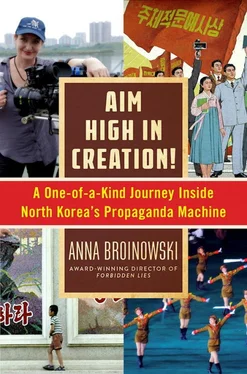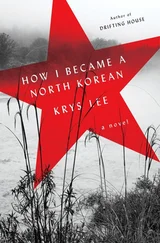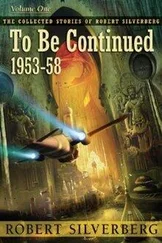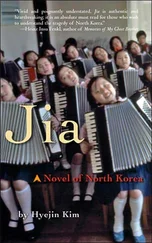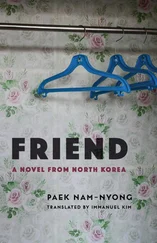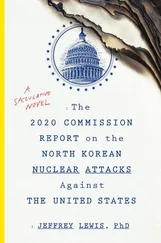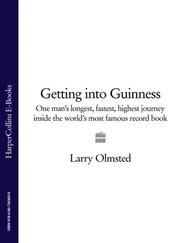There’s a reason no one has tried to do this before. It’s impossible.
In his seventy-one years, Kim Jong Il never spoke to a Western journalist. The chance he’d make an exception for me was less than zero, even if I did only want to talk about cinema. North Korean media visas are also rarely granted, no matter what story you’re telling. When they are, they can take up to a year to secure. Many journalists avoid the red tape altogether and go in as tourists—concealing HD recorders in their sunglasses and stills cameras to snatch footage of Pyongyang’s blighted citizens scouring the ground for food behind the city’s showcase tenements. The footage is then packaged into undercover exposés, telling the only story the mainstream media ever tells about North Korea: that it is an evil place, hell-bent on concealing its horrors behind a ruthless propaganda facade.
This story is reinforced by the thousands of people who have escaped over the decades. Think North Korea and terrifying reports of starving, tortured citizens, denouncing relatives to escape execution, spring to mind. The North Korean horror story has spawned books, documentaries, TV series, websites, bestselling novels, and blockbuster spoofs—inspiring outrage, shock, and derision. In the 2004 satire Team America , Kim Jong Il sings lonely arias in his Pyongyang palace, wondering why everyone “is so fucking stupid,” while feeding UN weapons inspector Hans Blix to his sharks. In the 2014 action comedy The Interview , the CIA sends two video journalists on a righteous mission to assassinate the murderous, Taylor Swift-obsessed Kim Jong Un. In Barbara Demick’s 2009 book Nothing to Envy: Ordinary Lives in North Korea , anonymous defectors remember secret love affairs, conducted in pitch-black parks sans electricity or trust. Adam Johnson’s 2012 novel, The Orphan Master’s Son , charts its hero’s horrifying journey from a state-run orphanage to kidnapping Japanese for the regime, and his brutal demise in the gulags; while Blaine Harden’s 2012 biography about Shin Dong Hyuk, Escape from Camp 14: One Man’s Remarkable Odyssey from North Korea to Freedom in the West, makes the gulags horrifically real. In the most notorious prison, Camp 14, where Shin Dong Hyuk was born, even the children of dissenters are punished.
Shin describes eating frogs, rats, and bugs to supplement the camp’s watery soup. He looks on with his classmates in silence as a small girl is beaten to death for hiding five kernels of corn in her pocket. At thirteen, he hears his brother and mother planning to escape and tells the guards—hoping for a reward of food. Instead, he is strung up over a fire and tortured. Then he is forced to watch with the rest of the camp as his mother and brother are blindfolded, hung, and shot. When Shin finally escapes, by crawling over a prisoner’s electrocuted body on the razor-wire fence, he is shocked. The North Korean villagers outside the camp seem wonderfully “free”: they can talk with each other at will; they openly exchange goods for food; they smile, sing, and wear colourful clothes. In an interview uploaded in 2008, Shin sits in a new apartment in Seoul, his dead eyes hooded in his smooth young face:
Even today I am still not quite sure of what the concept of freedom actually means… I first thought about escaping because I was hungry and tired but I’m not any more. Now I can eat a lot and I can have meat. Physically, I am so comfortable because I don’t have to work anymore, but mentally I am still in a lot of pain. Because of what I’ve been through in the prison camp for twenty-three years, as long as that experience follows me around throughout my life, I don’t think I can ever be happy.
I had to force myself to believe Shin’s story. I found it almost impossible to accept that humans were capable of such cruelty. If it hadn’t been for the Holocaust, I would have filed Camp 14 away as an exaggeration—the kind of thing defectors might construct to gain favour with their South Korean hosts. Facts about North Korea are notoriously difficult to verify—but the gulags, at least, are real. There are between 150,000 and 200,000 people living in them right now. The biggest is visible from space: it is fifty kilometers long, covering an area larger than Los Angeles. The camps range in severity—from “re-education” centres, in which inmates who have committed comparatively minor ideological crimes are made to study the teachings of Kim Jong Il and Kim Il Sung until they recant, to “complete control districts” like Camp 14, in which an estimated forty thousand political “irredeemables,” like Shin and his family, are worked to death.
The gulags have dominated the North Korean story for obvious reasons: their well-resourced, systematic approach to eliminating dissent is horrific. And yet, the more I read about the camps, the more I was struck by the fact that they are only part of the picture. What is life like for the 24.7 million other North Koreans who are not in prison? What are their stories? Are they all starving? Do they live in a society that is, on every level, unremittingly evil? The famine that killed up to two million North Koreans between 1995 and 1998 happened more than fifteen years ago—but Western newsfeeds continue to run stories about people eating grass to survive. Is this an accurate depiction of what life is like for the majority of people living in North Korea today?
Kim Jong Il’s books on cinema, despite their ridiculous claims that North Koreans are all “decently dressed and prosperous,” do confirm the existence of a thriving film industry, which means there is an audience. North Korea’s mortality and nutrition rates place it firmly in the Third World: according to the UN, over one third of its population is malnourished. But the other two-thirds, at least sixteen million people, are a group about whom we never hear. Do they have enough food to lead relatively normal lives? Lives that are poor by First World standards, but normal enough to include voluntary trips to the cinema? These were the people I wanted to find out about: the people Shin Dong Hyuk thought were free, when he saw them in the village after escaping Camp 14. I might never meet Kim Jong Il—but through his filmmakers, I hoped to discover the stories that ordinary North Koreans love, the actors they idolize and the songs they treasure.
There was no way I could do this with a camera hidden in my sunglasses. I would need the full permission of the regime.
When I first tried to get a media visa, in July 2010, my timing was atrocious. North Korea’s usual suspicion of Western filmmakers had ramped up to red-hot paranoia, thanks to a documentary called The Red Chapel . To make his film, Danish comedian Mads Brügger took in a small theatre troupe, pretending he wanted to forge an artistic exchange with North Korean actors, directors, and playwrights. They gave Brügger their trust, helping him stage a bizarre cross-cultural play. Brügger’s ebullient, middle-aged North Korean guide was so grateful for his efforts, she hugged him, declaring that she loved him like a son. With his footage safely in the can, Brügger went back to Denmark and betrayed every one of his subjects by inserting a narration that focused on the brutality of the gulags and the complicity of the North Koreans he’d met. In 2010, not long after The Red Chapel premiered at Sundance, Brügger’s motherly tour guide disappeared from Pyongyang.
Canadian filmmaker Shane Smith’s 2010 web documentary North Korean Film Madness was funnier than The Red Chapel , but just as contemptuous. The bearded, cool-dude Smith swanned around Pyongyang in a specially tailored Mao suit, poking fun at Kim Jong Il’s “crazy-ass, fucked-up world.” He winked at the camera as tour guides showed him museums of film equipment the Dear Leader had touched. For all his braggadocio about “uncovering the North Korean film industry,” however, Smith failed to locate a single filmmaker. His conclusion was that North Korean cinema was just another lie, and that movies were no longer being made. Smith was wrong. But he got 1.6 million likes on Facebook.
Читать дальше
